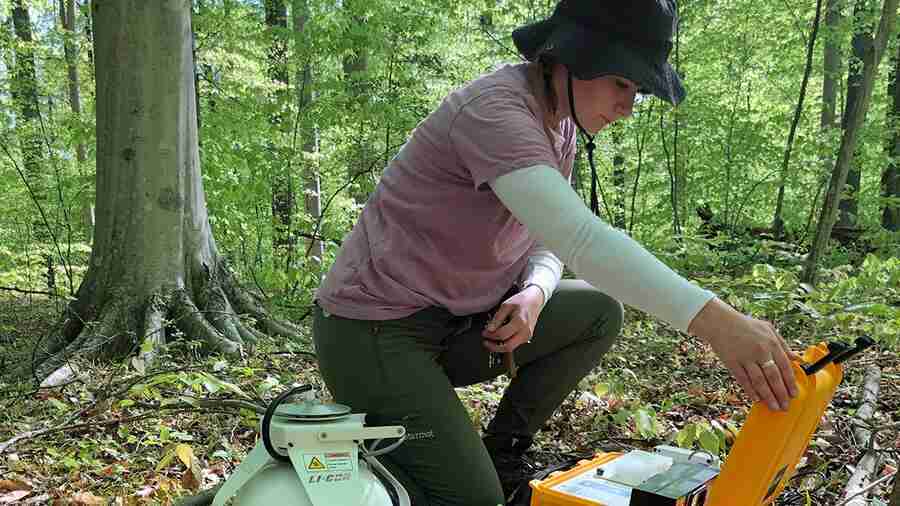EARTH SCIENCES
Uncertainties, gaps in data make it difficult to fully understand the impact of soil respiration on climate change

A recent review of soil respiration science published in the Journal of Geophysical Research: Biogeosciences sheds light on the complex process of soil respiration and its crucial role in the global carbon cycle.
Unfortunately, the review unveils a worrying reality – the lack of observational data and uncertainties surrounding this essential component of climate change. The quest to comprehend the flow of carbon dioxide (CO2) from the soil to the atmosphere using supercomputing methods seems to be constantly hindered, raising concerns about the accuracy of climate change models. Furthermore, the review highlights the need to address the lack of diversity within the global research community to overcome data gaps and improve estimations of global soil respiration.
Soil respiration, a process through which plants and microbes release CO2 into the atmosphere, surpasses human emissions by almost tenfold. Understanding and accurately calculating this flow on a global scale is vital to comprehend the intricate dynamics of the carbon cycle and climate change feedback. However, the review emphasizes that bridging the knowledge gap is challenging due to limited observational data and uncertainties surrounding soil respiration measurements.
One study mentioned in the review examined how soil respiration responds to rainfall, while another focused on the effects of tree stress on respiration by girdling trees. These laboratory studies, along with measurements in natural settings and simulations, have contributed to progress in understanding soil respiration. However, the lack of comprehensive data coverage and the inability to precisely measure this intricate process prevent scientists from building robust models.
To compound concerns, the review suggests that efforts to diversify the global research community must run parallel to advancements in machine learning and mechanistic modeling. By including scientists from lower-income regions, not only can data coverage be improved, but estimates of global soil respiration can also be refined. The current lack of diversity within the research community hampers progress in accurately quantifying soil respiration and its implications for climate change.
The challenges and uncertainties surrounding soil respiration have profound implications for climate change projections. The accuracy of climate models relies heavily on understanding the intricate dynamics of the carbon cycle, and soil respiration plays a significant role in this process. By accurately quantifying the flow of CO2 from the soil to the atmosphere, scientists can refine climate change models and identify potential feedback loops that may intensify the warming trend.
However, without comprehensive data coverage and reliable measurement techniques, these models will remain shrouded in uncertainty. The gaps in observational data, coupled with the lack of diversity within the research community, raise questions about the validity of climate change projections and the ability to make informed policy decisions.
The research community, policymakers, and funding agencies must prioritize addressing these issues. Investing in supercomputing technologies to analyze the vast amount of available data and making concerted efforts to diversify perspectives within soil respiration research are essential steps in advancing our understanding of climate change.
In conclusion, despite progress in soil respiration science, uncertainties and data gaps continue to hinder efforts to accurately quantify the flow of CO2 from the soil to the atmosphere. Understanding this crucial process is vital for refining climate change models and informing policy decisions. Addressing the lack of observational data and promoting diversity within the research community are imperative steps toward building a more comprehensive understanding of soil respiration's role in climate change. Only by doing so can we hope to combat the challenges posed by an increasingly uncertain climate future.
